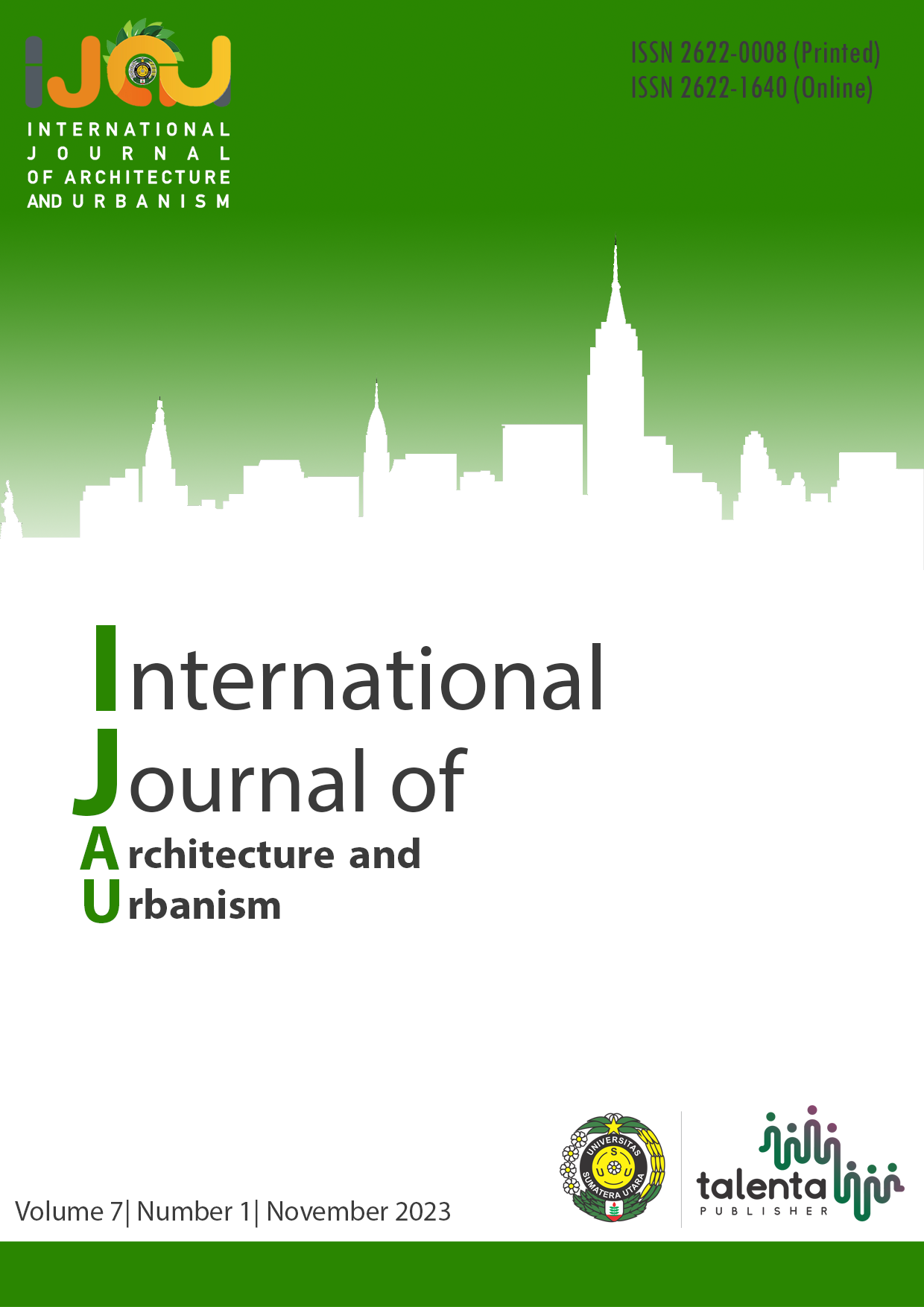Space Contestation in the Tri-Dharma Religious Building (Buddhism, Confucianism, Taoism) in Indonesia
DOI:
https://doi.org/10.32734/ijau.v7i1.11683Keywords:
architecture; taoism; temple; tri-dharma; viharaAbstract
This study examines the contestation of the worship space by looking at how three religions: Buddhism, Confucianism and Taoism, occupy space in the tri-dharma worship building. This paper discusses the conceptual, theoretical, historical, and contemporary political aspects of the three religions in Indonesia and how the Indonesian government has historically encouraged Buddhists, Confucians, and Taoists to worship in the same space. This study surveys secondary data on the architecture of the Tri-Dharma houses of worship in Indonesia and looks at how the elements of each religion are placed in the buildings and how this reflects the contestation of the three religions in Indonesia. The result of this research shows that architectural contestation occurs in the altar room, ornamental, and overall building style. This contestation reflects which sects are dominant and which are peripheral to the three religions. This finding has implications for the importance of efforts to foster harmony between Tri-Dharma religious communities in Indonesia and how each one responds to architectural dominance and builds a more varied architecture of places of worship for the Tri-Dharma religion.
Downloads
Downloads
Published
How to Cite
Issue
Section
License
Copyright (c) 2023 International Journal of Architecture and Urbanism

This work is licensed under a Creative Commons Attribution-ShareAlike 4.0 International License.


.png)










